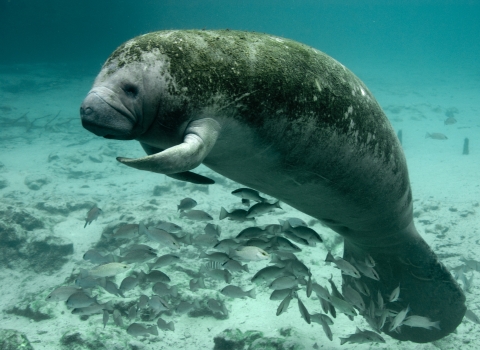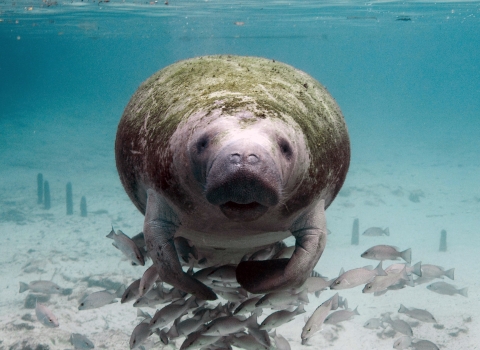SACRAMENTO, Calif.— The U.S. Fish and Wildlife Service is listing the San Francisco Bay-Delta distinct population segment of longfin smelt as endangered under the Endangered Species Act. The best available science indicates longfin smelt populations have significantly decreased throughout the San Francisco Bay estuary in recent decades.
“Like many species of fish, wildlife and their habitats, the hotter and drier climate has contributed to longfin’s decline, and the species needs our help,” said Paul Souza, U.S. Fish and Wildlife Service Pacific Southwest Regional Director. “We are dedicated to working with others to conserve longfin smelt while recognizing the importance of wetlands in our refuges and conservation areas, the benefits of agricultural lands, and the critical water resources that sustain California's communities."
The longfin smelt is a fish ranging from 3.5 to 4.3 inches in length, with a lifespan of about 2 to 3 years. It inhabits bays and estuaries along the coast from Northern California to Alaska. In the San Francisco Bay-Delta region, the species is restricted to the San Francisco Bay estuary and adjacent areas of the Pacific Ocean. Longfin smelt in this area are anadromous, meaning older juveniles and adults can migrate to the ocean but return to fresh or brackish water to spawn. The reproductive success and survival of longfin smelt depend on adequate freshwater flows for spawning and food. The main cause of their declining population is habitat loss, primarily due to long-term reductions and alterations in freshwater flow into the San Francisco Bay estuary. The threats facing longfin smelt also impact other wildlife species that rely on clean water and the smelt as a food source.
Endangered Species Act protections will support recovery for the longfin smelt by encouraging innovative approaches to managing water resources for both human and wildlife needs, fostering diverse partnerships to support conservation, and increasing awareness of threats the species faces. The decline of the longfin smelt is one of many signs pointing to imbalances in the San Francisco Bay estuary and efforts to conserve the species will additionally support a more robust and resilient ecosystem. Further enhancing the estuary's ability to provide a water supply, preserve habitat, offer recreational opportunities, and support economic activities.
Longfin smelt are currently listed as threatened under California’s Endangered Species Act, prohibiting the unpermitted possession, purchase, sale or take of state-listed species. Listing of the longfin smelt under the Endangered Species Act, will provide consistency between state and federal endangered species regulations, and reduce separate requirements.
The Endangered Species Act prevents species from going extinct and has inspired action to conserve at-risk species and their habitats. Since it was signed into law in 1973, more than 99% of all species listed under the law are still with us today.
The final rule will be available in the Federal Register’s reading room on July 29, 2024, and publish in the Federal Register on July 30, 2024, and can be read at https://www.regulations.gov/ by searching for Docket No. FWS–R8–ES–2022–0082.
-FWS-
The U.S. Fish and Wildlife Service works with others to conserve, protect and enhance fish, wildlife, plants and their habitats for the continuing benefit of the American people. For more information, visit www.fws.gov and connect with us on social media:
Facebook, Instagram, X (formerly known as Twitter), LinkedIn, Flickr, and YouTube.



